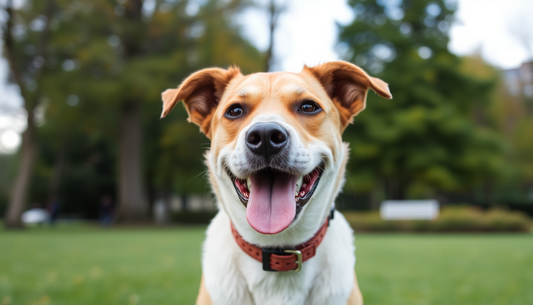
Dog Fences vs Invisible Fences: Which Is Better for Pet Safety?
Share
Choosing the right dog containment solution is essential for the safety and happiness of your furry friend. Whether you have a playful puppy or an older pet, ensuring they stay within a safe area protects them from traffic, other animals, and wandering off. In this post, we'll explore dog fences vs invisible fences, helping you understand the pros and cons of each option to make the best choice.
What Are Traditional Dog Fences?
Description and Materials
Traditional dog fences are physical barriers that mark the boundary of a yard or outdoor space. They come in various materials, including wood, metal, and vinyl. Wood fences offer a classic look and can be solid to prevent your dog from seeing outside distractions. Metal fences, like chain-link types, provide strength and durability but allow visibility through the fence. Vinyl fences are low maintenance and can combine privacy with style.
Common Uses
These fences keep pets safe by creating a clear, solid barrier. They work well to contain dogs who might challenge invisible boundaries, especially those who react to visual triggers or have a strong prey drive. Traditional fences are ideal for larger spaces and neighborhoods where physical barriers are valued for security reasons.
Understanding Invisible Dog Fences
How Invisible Fences Work
Invisible dog fences use a buried wire that sends a radio signal creating a boundary. Your dog wears a special collar that detects the signal when approaching the edge. The collar first emits a warning beep and then a mild static correction if your dog continues towards the boundary. This system trains pets to stay inside the safe area without a physical barrier.
Installation of Invisible Fences
Installing an invisible fence involves laying a wire around the desired perimeter, usually underground but sometimes above ground depending on your choice. The wire connects to a transmitter powered by electricity. Before installation, you need to plan the layout carefully, considering obstacles like trees or pools, and ensure the system is compatible with your dog's size and temperament.
Pros and Cons of Traditional Dog Fences
Advantages
Traditional fences are visible to both pets and people. This visibility reduces the chance of accidental escapes since dogs understand where the boundary lies. They tend to be very durable and can last years with proper care. Additionally, they offer security against strangers and animals entering your yard.
Disadvantages
The main drawbacks are cost and maintenance. Wood fences may require painting or staining, and all fences might need occasional repairs. Some fences can feel like an eyesore, depending on style and neighborhood rules. Also, dogs that are strong jumpers or climbers might still find ways to get out, requiring additional barriers.
Pros and Cons of Invisible Dog Fences
Advantages
Invisible fences are popular for their clean, unobtrusive look. They do not block views or change the appearance of your yard. Boundaries are fully customizable to fit odd-shaped yards or specific areas, such as pools or garden spaces. They can be a cost-effective alternative to large physical fences.
Disadvantages
Invisible fences require training for your dog to understand the beeps and corrections. Some dogs may not respond well or could become anxious. There's also a risk of escape if the battery in the collar dies or the system malfunctions. Plus, invisible fences do not stop others or animals from entering your yard.
Comparing Dog Fences vs Invisible Fences: Which Is Better?
Safety Factors
Traditional fences provide a solid, visible barrier which often feels more secure for owners and pets. They prevent entering and exiting physically. Invisible fences rely heavily on your dog’s training and response to signals, which might not be foolproof for all dogs.
Cost and Maintenance
Invisible fences usually have lower upfront costs and less visual impact but can require collar replacement or system repairs over time. Traditional fences have a higher installation cost and need routine upkeep but last longer with fewer technical issues.
Suitability Based on Pet Behavior
For dogs that dislike confinement or are easily distracted, traditional fences might be better. If your dog is well-trained and responds quickly to commands, an invisible fence could work well in a suitable yard.
Tips for Choosing the Right Dog Containment Solution
Start by assessing your yard size, landscape, and your dog’s behavior. Think about how intense their energy is and how likely they are to test boundaries. Check local laws or homeowner association rules, as some areas restrict fence types or heights.
Sometimes combining both fences offers the best security. For example, a low wooden fence combined with an invisible fence inside can prevent jumping and increase containment.
Conclusion
When deciding on dog fences vs invisible fences, there is no one-size-fits-all answer. Traditional fences offer strong, visible security but at a higher cost and maintenance need. Invisible fences provide clean aesthetics and flexible boundaries but require training and technical upkeep.
Consider your dog’s personality, your yard, and budget carefully. No matter what you choose, your pet’s safety is the top priority. For more supplies to keep your pets happy and secure, visit PawCounter.com. Treat your paw companions with the best products and enjoy peace of mind knowing they're well cared for.
Explore quality pet essentials at PawCounter.com and give your pets the safety and comfort they deserve.



